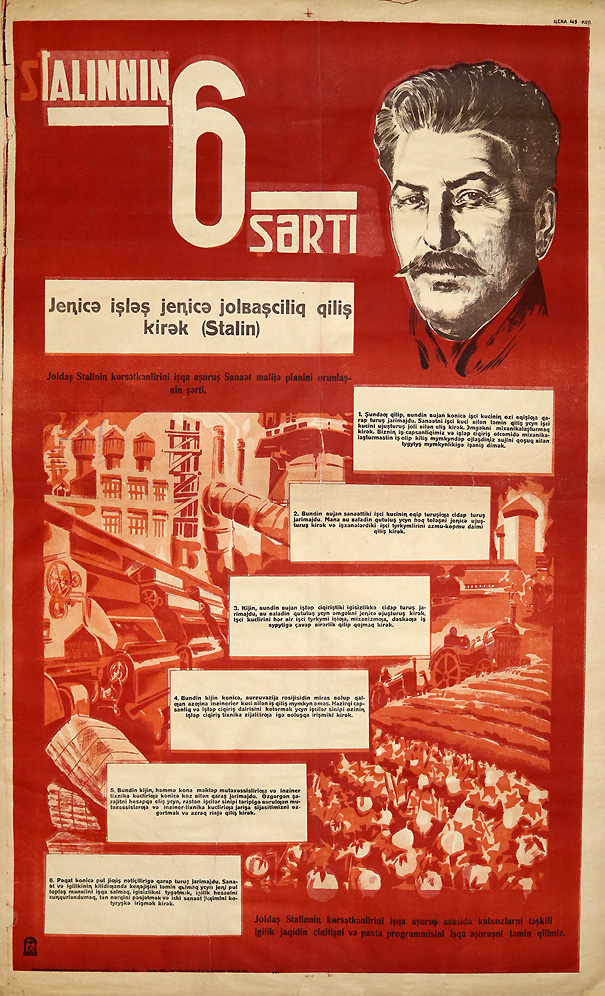
Stalin's 6 Directives. [Partial translation]
Poster Number: PP 561
Category: Economy
Poster Notes: [White box at top] “Work in a new way, lead in a new way.” (Stalin); The quote from Josef Stalin is attributed to his 1931 meeting with industrialist workers in the Soviet Union.
Media Size: 43x26
Poster Type: Lithograph
Publishing Date: 1932
Technical Information on Poster: Order No. 943; Ung. UNGUR; Price 45 kopeks.
Print Run: 1,000
Glavlit Directory Number: 328. Uzlit, Uzbekistan section of Glavlit
Sources & Citation: Fitzpatrick S. (1979). Education and social mobility in the soviet union 1921-1934. Cambridge: Cambridge University Press., p. 315
Catalog Notes: PP 561 Economy b
USSR Region: Uzbek SSR
Language: Uzbek
Artist: Artist Unknown — неизвестный художник
The artist's name on the poster is not indicated. By assigning Artist Unknown to a poster it also could mean the artist used a chop mark whereby no signature is seen thus rendering the artist's identity anonymous.
Read More About This Artist
Printer: Uzpoligraf Typolithography, Uzbekistan — Типо-Литография Узполиграф треста, Узбекистан
During the early 1930s, the Uzbekistan-based Uzpoligraf printing trust consolidated a bevy of printing shops both large and small operating within the UzbekSSR and it placed them under state control. Uzpoligraf's principal headquarters were located in Tashkent.
Read More About This Printer
Publisher: Oznaşr (Uzbek State Publishing) — Ознаср (Узгосиздат)
Ѳznaşr (Uzbek State Publishing) was formed around 1924 in the Uzbek Soviet Socialist Republic. Its main offices were located in Samarkand and in Tashkent. Prior to the October Revolution of 1917, there were few printing presses and lithography studios in Uzbekistan, and the few that existed tended to serve the Imperial Russian administration. In 1920, the Turkestan State Publishing House (likely the first publisher in the "Soviet East") developed operations across Central Asia. Ѳzna...
Read More About This Publisher